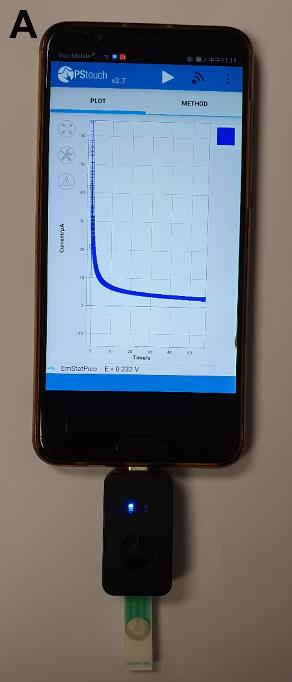CSIC through the Instituto de Ciencia de Materiales de Barcelona (ICMAB) and the Instituto de Microelectrónica de Barcelona-Centro Nacional de Microelectrónica (IMB-CNM) has developed a new disposable electrochemical sensor for the on-site detection of water pollutants. It is a sample-to-result device that does not require manual sample pretreatment.
Industrial partners are being sought to collaborate through a patent license agreement.
An offer for Patent Licensing
New screen-printed electrochemical sensor for in-field analysis
Screen-printed electrochemical sensor connected to a compact potentiostat powered by a mobile phone Water pollution is an increasing global concern that damages human health, aquatic ecosystems, and economic growth.
Frequent monitoring of water is currently unfeasible due to the complexity of the processes and equipment needed. For instance, if we consider Chemical Oxygen Demand (COD), a key parameter for the evaluation of water quality, state-of-the art analytical methods require the use of hazardous materials, sample pre-processing and must be done by skilled technicians. New approaches using electrochemical methods determine water pollutants in a faster and more user-friendly manner. However, different manual steps are still required, making in-field testing less convenient and sensor fabrication more difficult to be scaled up.
CSIC has developed a new screen-printed electrochemical sensor using tailor-made functional materials. The sensor is portable, just requires sample addition and is user-friendly. Professionals without specific training can detect water pollutants on-site with no need for manual sample pretreatment. The resulting sensor approaches have been applied to the detection of different contaminants such as heavy metals, COD or halogenated compounds.
Main innovations and advantages
· User-friendly screen-printed electrochemical sensors that do notrequire any manual sample pre-conditioning for sample-to-resultanalysis.
· On-site rapid detection.
· Production of the screen printed electrodes easily scaled up.






